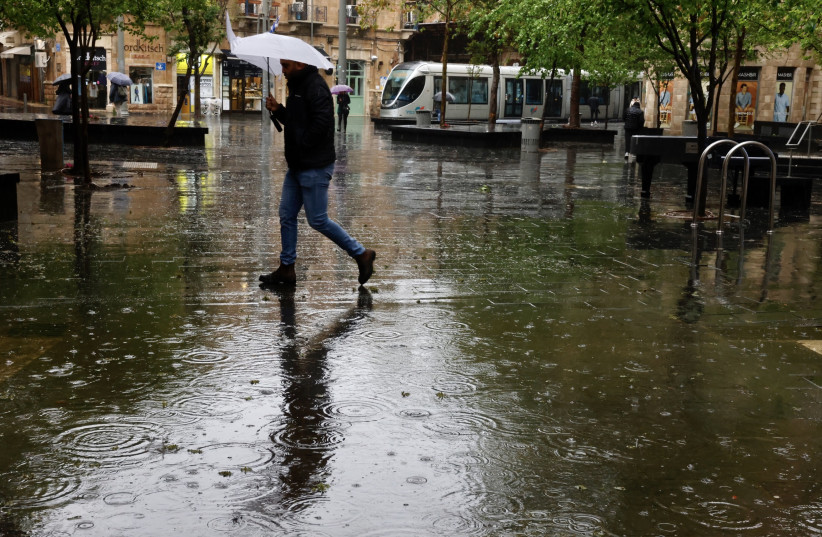More than 100 mm. of rain have flooded some parts of the country in recent days, including about 80 mm. in parts of the metropolitan area of Tel Aviv alone in just the last 24 hours. The stormy weather, which included hail over the holiday, has left citizens with raised umbrellas and brows of concern.
Is it supposed to rain this much in Israel in April?
“We have had such events before,” said Prof. Hadas Saaroni, a climatologist at the Porter School of the Environment and Earth Sciences at Tel Aviv University. “This is extreme rain, but it is not the most extreme rain we have ever seen in April.”
According to Saaroni, Israel’s autumn and spring seasons are known for erratic weather patterns, including extreme rains and cold on the one hand, and severe heat waves accompanied by dust from the Sahara on the other hand.
“To have so much rain, you need a good supply of water vapor from somewhere. The air in the desert is usually really dry,” said Prof. Daniel Rosenfeld of the Institute of Earth Sciences at the Hebrew University of Jerusalem. But sometimes a jet stream can bring moisture from the tropics to the desert in Israel, leading to heavy rains.

He said that Israel and the rest of the region – Saudi Arabia, Jordan, Kuwait and Iraq – have all been experiencing increased bouts of heavy rain and major floods, which “might be connected to a trend that is predicted to appear in a warming world.
“The probability of desert events like this is expected to increase with global warming because the tropical moisture is predicted to expand,” he continued. “A warmer world means more vapor in the atmosphere – a warmer atmosphere can hold more vapor. And when that extra water vapor gets into the desert in the right ecological conditions, it can produce heavier rains in the desert, which we appear to be experiencing recently.”
Another expert, Barry Lynn, co-founder of Weather It Is, told The Jerusalem Post that humanity is adding a lot of energy to the climate system, which could create greater atmospheric waves and lead to snow and rain storms.
But he cautioned that one should be careful to say recent events are “caused by global warming” rather than “a later winter could be consistent with global warming.”
"This is extreme rain, but it is not the most extreme rain we have ever seen in April."
Professor Hadas Saaroni
Saaroni explained that individual events could not be directly connected to climate change. Rather, she said that only long-term trends can be connected. So, for example, if scientists would see that the probability of experiencing an extreme rain event changed from once every five or 10 years to every year, then the climate change flag could be raised.
“Climate change is a change in frequency, intensity or duration, which can only be determined over a long series of events,” she stressed.
She noted that during the last 45 years, there was no change in the annual rainfall in Israel. However, the number of rainy days has decreased while the intensity of the rain has increased.
Future projections of drying on the one hand and intensifying rain events on the other hand are cause for concern.
Moreover, longer dry periods during the mid-winter and too-intense rainfall and cold weather could affect agriculture. While Israel is No. 1 in the world regarding reusing water for agriculture, still the rainfall is most needed for the natural landscape.
“We can see changes in the vegetation, making the future predictions even more pessimistic,” she added. “Everyone is talking about democracy, but we must react to the climate change crisis.”
